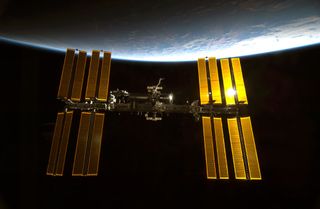A Commercial Observatory Bound for the International Space Station Lands First Customer

PARIS — The German Aerospace Center (DLR) on Oct. 4 said it had signed an agreement with Teledyne Brown Engineering of the United States to place the first commercial Earth observation payload on the International Space Station (ISS) in late 2015.
The decision by Germany's space agency to be the inaugural customer for Teledyne's Multi-User System for Earth Sensing, or MUSES, platform is a long-awaited validation of space station backers' view that the orbital outpost, despite a less-than-ideal orbit and concerns about camera stability on the busy complex, will find an Earth observation market.
DLR said its memorandum of agreement with Huntsville, Ala.-based Teledyne calls for DLR to develop a visual and near-Infrared imaging spectrometer for the MUSES platform, which can carry up to four separate observing instruments. The instrument will be used for land, ocean and atmospheric observation.
Teledyne is developing MUSES as part of an agreement with NASA. DLR said the company is scheduled to deliver the platform to NASA in late 2014, and that the spectrometer should be in operation by late 2015.
"It is effective to use existing platforms, such as the ISS, as carriers of Earth observation instruments,” DLR Chairman Johann-Dietrich Woerner said in a statement. “We are delighted at the formation of this partnership between science and industry, which through its very existence will be a catalyst in the ongoing development of new Earth observation systems.”
NASA awarded Teledyne a Cooperative Agreement in June 2012 for MUSES as part of NASA's broader effort to foster commercial use of the station.
Germany is the biggest investor in Europe's involvement in the space station.
Get the Space.com Newsletter
Breaking space news, the latest updates on rocket launches, skywatching events and more!
This story was provided by SpaceNews, dedicated to covering all aspects of the space industry.
Join our Space Forums to keep talking space on the latest missions, night sky and more! And if you have a news tip, correction or comment, let us know at: community@space.com.
Peter B. de Selding is the co-founder and chief editor of SpaceIntelReport.com, a website dedicated to the latest space industry news and developments that launched in 2017. Prior to founding SpaceIntelReport, Peter spent 26 years as the Paris bureau chief for SpaceNews, an industry publication. At SpaceNews, Peter covered the commercial satellite, launch and international space market. He continues that work at SpaceIntelReport. You can follow Peter's latest project on Twitter at @pbdes.

